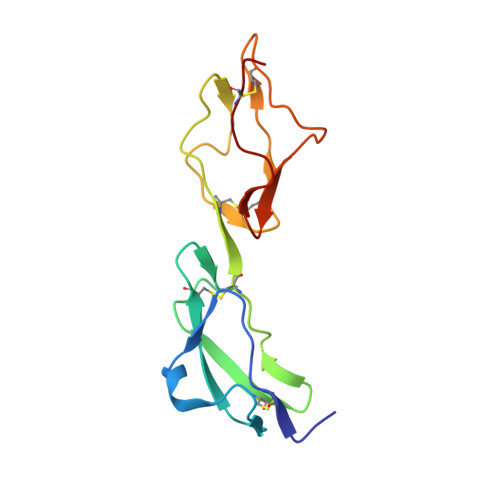Dimerization of Complement Factor H-Related Proteins Modulates Complement Activation in Vivo.
Goicoechea De Jorge, E., Caesar, J.J.E., Malik, T.H., Patel, M., Colledge, M., Johnson, S., Hakobyan, S., Morgan, B.P., Harris, C.L., Pickering, M.C., Lea, S.M.(2013) Proc Natl Acad Sci U S A 110: 4685
- PubMed: 23487775
- DOI: https://doi.org/10.1073/pnas.1219260110
- Primary Citation of Related Structures:
3ZD1, 3ZD2 - PubMed Abstract:
The complement system is a key component regulation influences susceptibility to age-related macular degeneration, meningitis, and kidney disease. Variation includes genomic rearrangements within the complement factor H-related (CFHR) locus. Elucidating the mechanism underlying these associations has been hindered by the lack of understanding of the biological role of CFHR proteins. Here we present unique structural data demonstrating that three of the CFHR proteins contain a shared dimerization motif and that this hitherto unrecognized structural property enables formation of both homodimers and heterodimers. Dimerization confers avidity for tissue-bound complement fragments and enables these proteins to efficiently compete with the physiological complement inhibitor, complement factor H (CFH), for ligand binding. Our data demonstrate that these CFHR proteins function as competitive antagonists of CFH to modulate complement activation in vivo and explain why variation in the CFHRs predisposes to disease.
Organizational Affiliation:
Centre for Complement and Inflammation Research, Department of Medicine, Imperial College, London W12 0NN, United Kingdom.

















